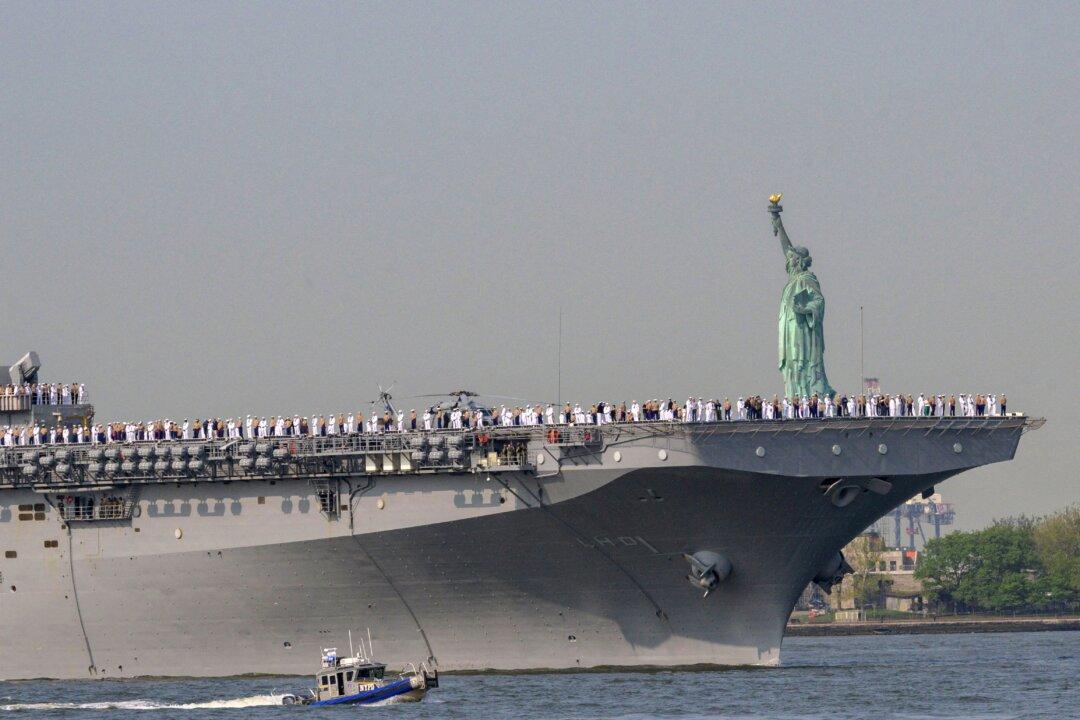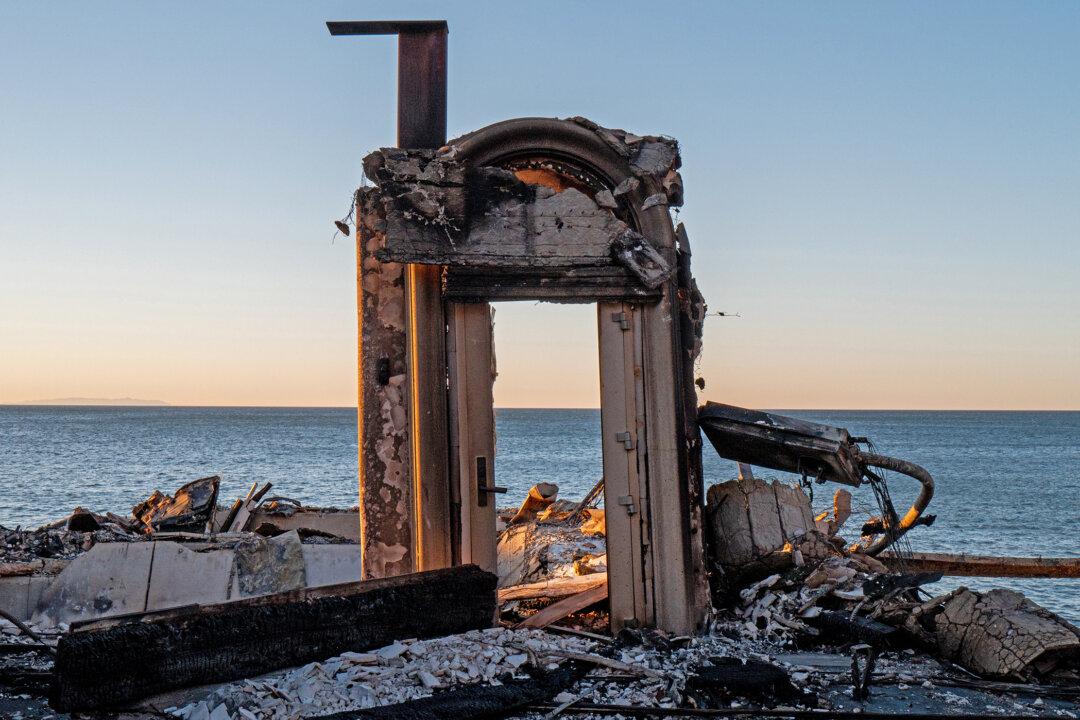Commentary
Reports emerged starting on Jan. 20 that Iran loaded
two of its cargo ships in China with approximately 1,000 tons of sodium perchlorate, a chemical necessary to produce solid rocket propellant.
The cargo is enough for 260 medium-range ballistic missiles. These missiles threaten U.S. forces in the Middle East, as well as U.S. allies like Israel, Saudi Arabia, the United Arab Emirates, and Ukraine.
The chemicals could eventually be used to fuel nuclear-tipped missiles if Iran manages to acquire
nuclear weapons. Tehran is well on its way. The International Atomic Energy Agency chief warned on Jan. 22 that Iran has dramatically increased its uranium enrichment activities. By December, Iran already had approximately 440 pounds of 60 percent enriched uranium.
According to the Foundation for Defense of Democracies, “No other country has enriched to these levels without producing nuclear weapons.” What Iran already has is almost enough to produce five nuclear bombs, once the material is enriched to the 90 percent level.
The two ships carrying the sodium perchlorate are called the Golbon and Jairan. Both fly the Iranian flag, and the company that controls them is
sanctioned by the United States. The European Union sanctioned the parent company, the Islamic Republic of Iran Shipping Lines.
The Golbon is reportedly carrying 34 20-foot containers of sodium perchlorate and, on Jan. 26, was heading through the Taiwan Strait toward the South China Sea. The
Jairan is docked near Liuheng, China, and will reportedly depart for Iran in early February with another 22 containers of the chemical.
Since 1979, China has sold large amounts of
weapons and dual-use military chemicals to Iran, including Silkworm anti-ship missiles and material used in
ballistic missile nose tips. It has also provided expertise, training, and technology for Iran’s ballistic missile program.
The Chinese arms and technology transfers are typically in exchange for Iranian oil and in violation of international sanctions. The Middle East and Eastern Europe, given Iranian arms sales to Russia, have been destabilized as a result.
Iran’s economy depends on
oil exports, and so the regime in Beijing is enabling Iran’s malign behavior in the region, including support for the Oct. 7, 2023, attacks on Israel, and Houthi attacks on Red Sea shipping. The Chinese Communist Party should receive consequences for enabling these heinous attacks in the form of increased sanctions and tariffs on China, at the very least.
The Iranian regime will probably be at the wrong end of related sanctions imposed by President Donald Trump’s
new “maximum pressure” campaign to “bankrupt” Tehran’s ability to continue funding regional proxies and pursuing nuclear weapons. To that end, Trump will likely target its oil sales to China. Iran increased oil exports from 400,000 barrels per day (bpd) to over 1.5 million bpd between 2020 and 2024 due to a lack of sanctions enforcement by the prior administration. That was to tamp down inflation. But there’s a new sheriff in town, and he has a plan to pump American oil.
Due to U.S. sanctions, Iranian oil is shipped via a
shadow fleet that re-documents it as having a non-Iranian origin, including through dangerous mid-ocean ship-to-ship transfers. In July, two of the rickety vessels collided and caught fire near Singapore. About
90 percent of Iranian oil exports went to China at a discount due to the sanctions. Small Chinese operators known as “teapot refiners” typically use yuan to buy Iranian crude from middlemen, including most likely from Malaysia. This avoids U.S. scrutiny and sanctions that the larger Chinese state-owned refiners would receive if they did the same.
One likely option for Trump is to impose secondary
sanctions on China’s minor banks, which facilitate even smaller Iranian oil purchases. National security adviser Mike Waltz supported this strategy during his time in Congress.
We should also do more at sea. Rather than wait for the two cargo ships to unload their deadly cargo, the sodium perchlorate could be interdicted by the United States or allied navies and destroyed. It wouldn’t be the first time. In 2022, the United States reportedly intercepted
70 tons of ammonium perchlorate (a refined version of sodium perchlorate) on a ship transiting from Iran toward its Houthi proxies in Yemen.
Repeating the interdiction against the Golbon and Jairan ships could nip 260 Iranian medium-range ballistic missiles in the bud, saving hundreds of millions, if not billions, of dollars in the process. It is much cheaper to nab a couple of cargo ships than to shoot down missiles from the sky, or pay for the damages that the missiles do once they hit their targets.
Stronger action against the Iran–China link is in the interests of the United States and all of our allies mentioned above. Any complaints about freedom of the sea or freedom of trade should be met with firm international legal arguments that there must be no freedom for the unholy alliance of totalitarian dictatorship and ruthless terrorism.
Views expressed in this article are opinions of the author and do not necessarily reflect the views of The Epoch Times.







